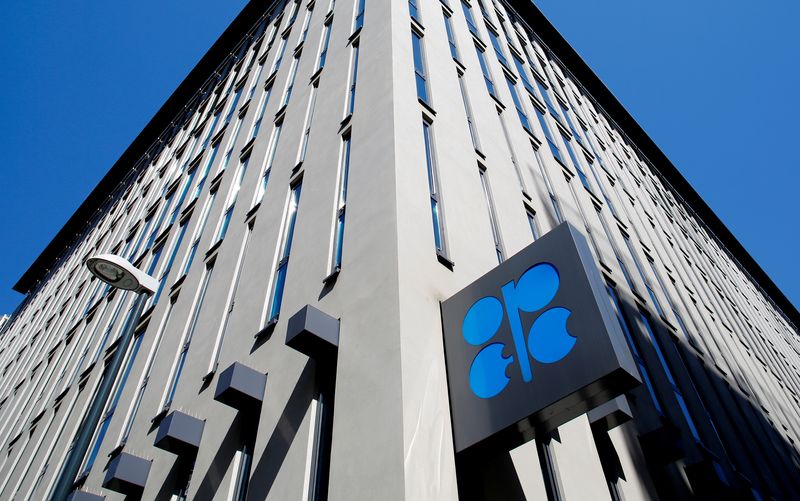By Alex Lawler
LONDON (Reuters) - The surprise oil output cuts announced on Sunday by OPEC+ members illustrate their greater power over the market, given limited supply growth by other producers such as U.S. shale firms and still-growing demand despite the energy transition.
Oil has jumped to $85 a barrel since members of the Organization of the Petroleum Exporting Countries and allies including Russia announced production cuts of about 1.16 million barrels per day (bpd), adding to curbs already in place.
While OPEC or OPEC+ decisions to cut output in the past have drawn warnings that higher prices and lower OPEC+ output would encourage U.S. shale producers to pump more, officials have not voiced such concerns recently.
Goldman Sachs (NYSE:GS) said it sees "elevated OPEC pricing power - the ability to raise prices without significantly hurting its demand - as the key economic driver", and estimates the production cut will raise OPEC+ revenues.
"One thing is for certain, OPEC is in control and driving price and U.S. shale is no longer viewed as the marginal producer," said James Mick, senior portfolio manager at Tortoise Capital Advisors.
"OPEC wants and needs a higher price, and they are back in the driver's seat to obtaining their wishes."
U.S. shale oil drillers over the last two decades helped to turn the United States into the world's largest producer. But the gains in output are slowing and executives warn of future declines.
U.S. oil and gas activity stalled in the first quarter, according to a survey, with some respondents citing higher costs and interest rates. OPEC has this year been lowering its U.S. shale oil output forecast, having also done so in 2022.
An OPEC+ source, asked if OPEC+ is in the driver's seat when it comes to the oil market now, said: "We are not in the passenger seat".
OPEC+ does not have a target for oil prices. The Saudi Arabian energy ministry said the voluntary output cut from the kingdom, the kingpin of OPEC+, was a precautionary measure aimed at supporting oil market stability.
LACK OF INVESTMENT
OPEC sources have cited a lack of sufficient investment to increase supply as likely to support prices this year.
Investment is rebounding after taking a hit during the pandemic. According to the International Energy Forum (IEF), oil and gas upstream capital spending rose 39% in 2022 to $499 billion, the highest level since 2014 and the largest ever year-on-year gain.
But, the IEF said, annual upstream investment will need to increase to $640 billion in 2030 to ensure adequate supplies.
OPEC is pumping almost 1 million bpd less than its current output target, according to its own figures and other estimates, with notable shortfalls in Nigeria and Angola from which Western oil companies have moved away in recent years.
While non-OPEC producers are still expected to pump more in 2023, the forecast of a supply increase of 1.44 million bpd falls short of expected world demand growth of 2.32 million bpd, according to OPEC forecasts.
The International Energy Agency, which represents 31 countries including top consumer the United States, also expects demand growth to exceed supply growth, although to a smaller extent than OPEC.
In OPEC's view, investment cuts after oil prices collapsed in 2015-2016 due to oversupply, along with a growing focus by investors on economic, social and governance (ESG) issues - such as tackling climate change - have led to a shortfall in the spending needed to meet demand.

OPEC Secretary General Haitham Al Ghais, in comments to Reuters last year, attributed slower shale growth to factors including an increase in investor caution and the impact of ESG issues on the industry.
"The scope for supply growth outside of OPEC+ members is limited and in combination with tighter conditions expected later this year even before this cut was announced, there is now greater upside risk to prices," said Callum Macpherson, head of commodities at Investec.